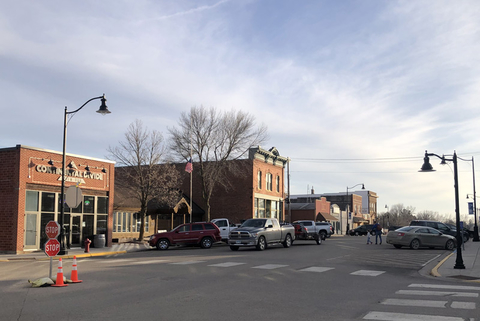Assessment helps community strengthen its sense of belonging
When the City of New York Mills decided to participate in University of Minnesota Extension’s Welcoming Communities assessment, it was an easy decision.
“New York Mills has a history of doing this type of work as a community,” says Betsy Roder, executive director of the New York Mills Regional Cultural Center. “We’ve worked on how to be more welcoming and integrative.”
Extension’s Welcoming Communities assessment helps communities identify their strengths and weaknesses related to diversity and inclusion efforts. Participants assess whether or not there are policies and practices in place that foster a more welcoming and inclusive space.
“We gather this feedback and walk them through the data collection process,” says Ellen Wolter, Extension leadership and civic engagement educator. “We then use that information to help the community realize where they need to improve.”
A particular challenge of the assessment process, Roder says, is ensuring an accurate mix of participants — who represent all types of community members — are part of the discussion. “It’s challenging,” she says. “Who are we not thinking of ? Who are we not inviting? We’re doing our best, though, and we’re engaging new people.”
This can mean inviting community members who do not embrace inclusive practices. “It can be difficult to have people at the table who are opposed to inclusion efforts,” says leadership and civic engagement educator Jenn Aranda. “But we always say, ‘These are important voices.’ They’re people with social capital, so how can we bring them together without triggering reactions among participants?”
Roder both expects and accepts this challenge. “This is the hard work,” she says. “If growth is going to happen, it has to get uncomfortable. If everyone agrees, you leave feeling good, but you’re not really doing the work.”
New York Mills received its assessment results in January. “We reviewed the data and have started addressing areas of opportunity,” says Roder. “One idea we discussed is to use Welcoming Week in September to plan an event that invites folks to come together and learn about welcoming efforts happening in the various sectors of our community.”
The effort is sure to be one of many. “We recognize there is always work to be done,” Roder says. “That’s a big part of this work—knowing where we need to grow and taking action on it.”
The Welcoming Communities assessment looks at seven sectors of community life and within those assesses six aspects of inclusion.
Sectors of community life
- The school system
- The health care system
- Law enforcement
- Non-profit organizations
- Business community
- Local government
- Religious organizations
Aspects of inclusion
- Awareness of the importance of inclusion
- Engagement of diverse groups in community activities
- Resources to address inclusion
- Leadership energy to promote inclusion
- Sharing power in planning and decision-making
- Policies and practices that promote inclusion



